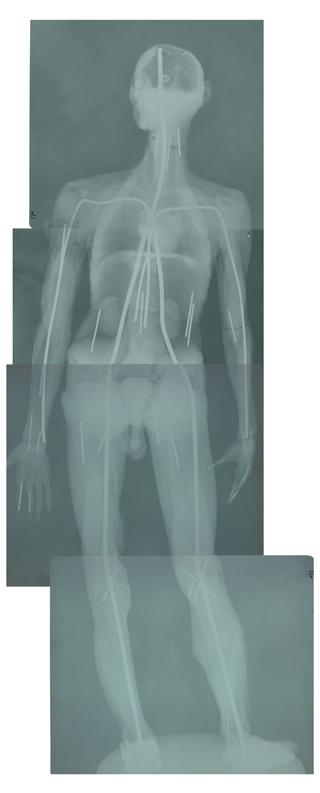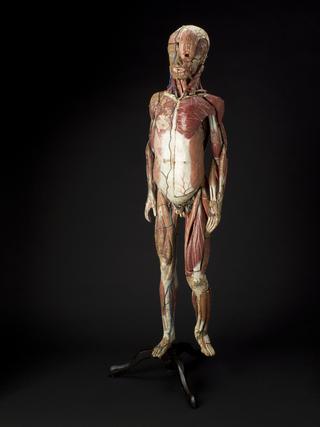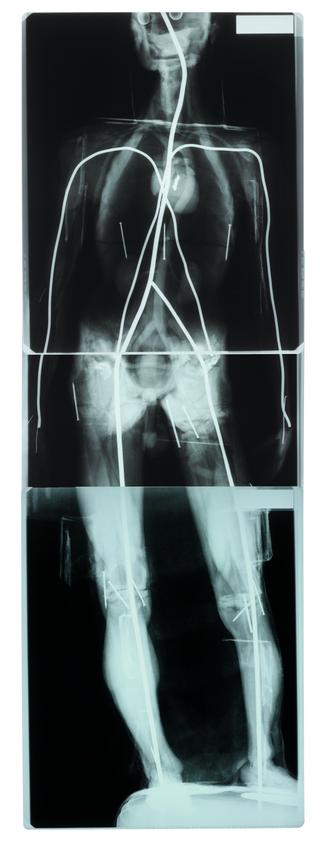
Part of a human stomach dissected by Edward Jenner, England, 1790-1823
- preparer:
- Edward Jenner
Part of a human stomach, dissected by Edward Jenner
Edward Jenner (1749-1823) was the pioneer of vaccination but was also known for his delicate dissections. Here, the section of the stomach has been flattened and injected with wax to show the veins and arteries as well as the delicate membrane of the stomach wall. It may have been used as a teaching aid to show the structure of the stomach.
Dissection was an increasingly common part of medical education at this time but due to a lack of bodies preparations such as this were important to show students the workings of the human body. Without wax injection, the blood vessels could not be as easily identified.
Details
- Category:
- Anatomy & Pathology
- Collection:
- Sir Henry Wellcome's Museum Collection
- Object Number:
- A600030
- Materials:
- human tissue, wax, glass, metal (unknown), wood (unidentified) and card
- Measurements:
-
overall (framed): 30 mm x 204 mm x 156 mm, .68 kg
- type:
- human remains and stomach
- credit:
- Wellcome Trust




